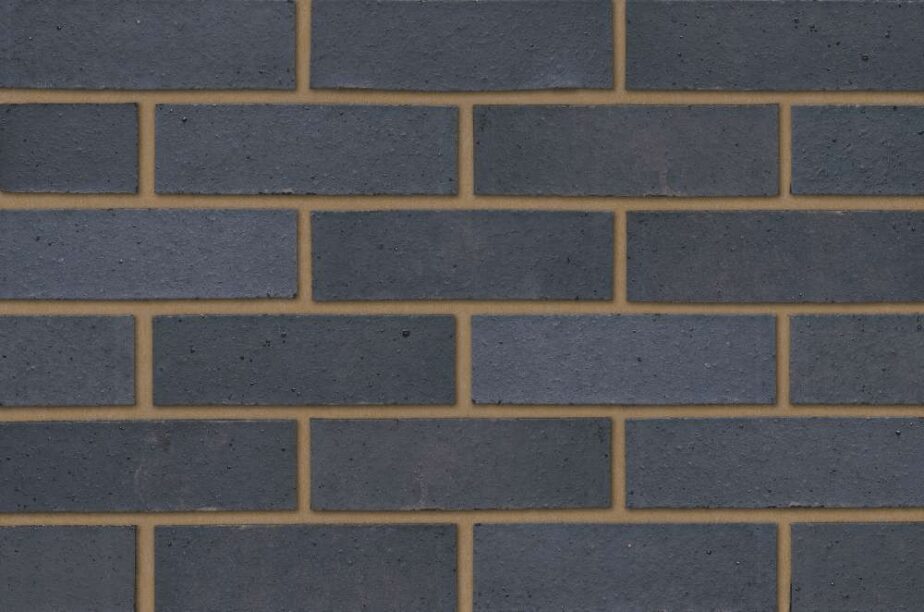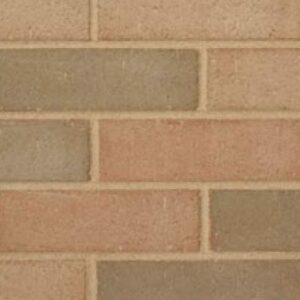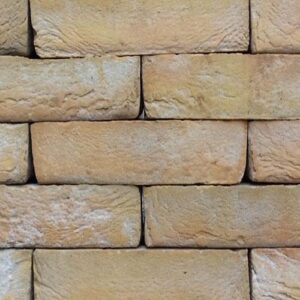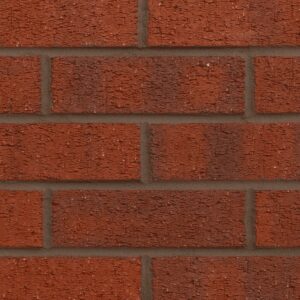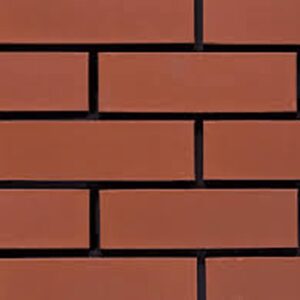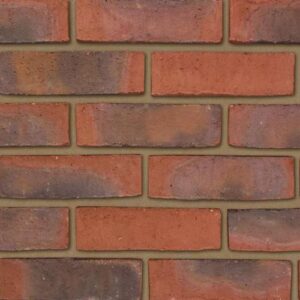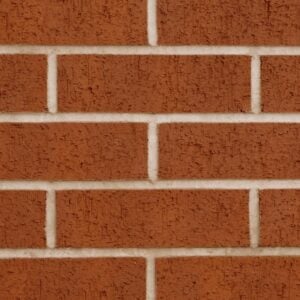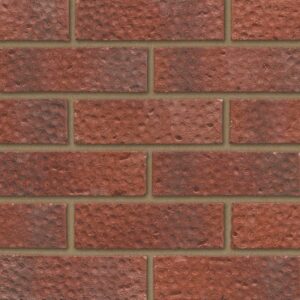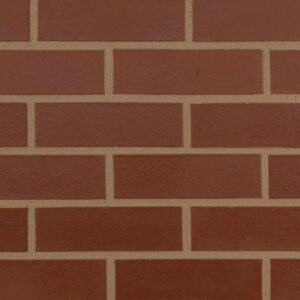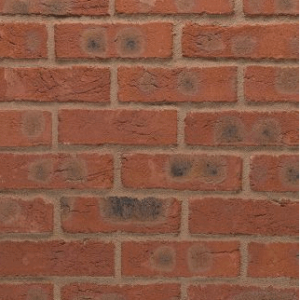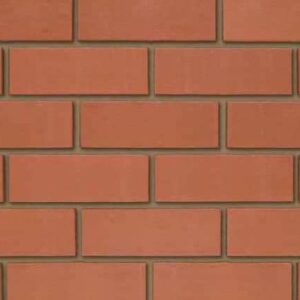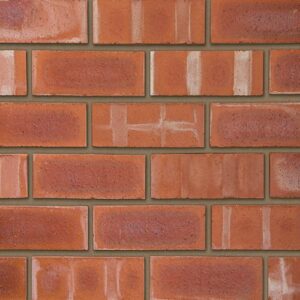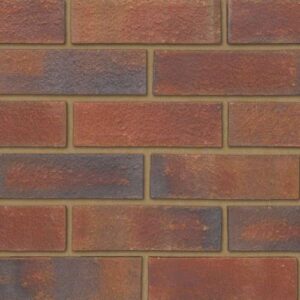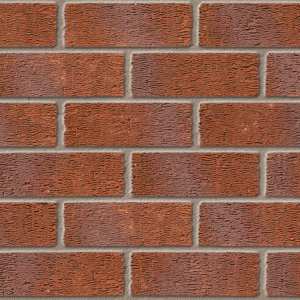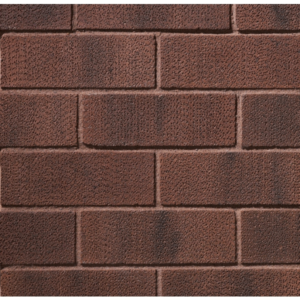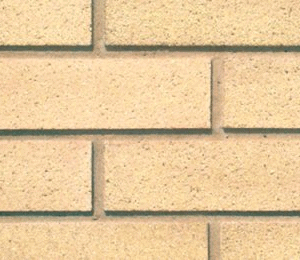Ibstock 65mm Lodge Lane Staffordshire Slate Smooth Blue Bricks (Pack of 380)
£666.85 inc. VAT
(£1.75/brick)
| 1-3 | 4-6 | 7-10 | 11+ |
| £666.85 | £656.85 | £651.85 | £646.85 |
Ibstock 65mm Lodge Lane Staffordshire Slate Smooth Blue Bricks (Pack of 380) are a blue brick manufactured by Ibstock.
Ibstock Lodge Lane Staffordshire Slate Blue Bricks are smooth wirecut facing clay bricks of measure 215 x 102 x 65mm (L x H x W), ideal for construction work.
Ibstock blue bricks are the ideal choice if you are looking to achieve a contemporary and modern look for your project, and their high-quality raw materials make them robust and durable. Their striking grey / blue colour will make them stand out from the crowd, and the manufacturing process of the Ibstock blue engineering bricks means that you can use them as facing bricks as well as engineering bricks – they really are the perfect allrounder.
Ibstock blue bricks are generally used as an engineering brick as they are high in strength and extremely frost resistant thanks to their low water porosity, but more recently they are being used to add a decorative element to construction projects that want to add something more innovative.
We're here to help
You may also like...
Ratings & Reviews
Verified by REVIEWS.io ©
Product Information
Ibstock 65mm Lodge Lane Staffordshire Slate Smooth Blue Bricks (Pack of 380) are a blue brick manufactured by Ibstock.
Ibstock Lodge Lane Staffordshire Slate Blue Bricks are smooth wirecut facing clay bricks of measure 215 x 102 x 65mm (L x H x W), ideal for construction work.
Ibstock blue bricks are the ideal choice if you are looking to achieve a contemporary and modern look for your project, and their high-quality raw materials make them robust and durable. Their striking grey / blue colour will make them stand out from the crowd, and the manufacturing process of the Ibstock blue engineering bricks means that you can use them as facing bricks as well as engineering bricks – they really are the perfect allrounder.
Ibstock blue bricks are generally used as an engineering brick as they are high in strength and extremely frost resistant thanks to their low water porosity, but more recently they are being used to add a decorative element to construction projects that want to add something more innovative.
Why should you choose Ibstock blue engineering bricks?
- There are many uses for Ibstock blue bricks, whether you are looking to use them in the fabric of the building or as a decorative feature.
- Thanks to their low water porosity, they are highly frost resistant
- The wirecut manufacturing process means that they are mold resistant
- As they are made from clay, Ibstock blue bricks are extremely strong and durable and will help to increase the longevity of your building.
Whether you are looking for something striking such as Ibstock blue engineering bricks, or you want something more classic such as Ibstock red bricks, we have a wide range of tones, colours, and shades for you to choose from with prices to suit every budget.
Natural Variation Information
Ibstock blue bricks are made using naturally occurring materials, meaning that the colour will differ slightly for each brick. Due to this, additional care and consideration is required when building with blue bricks to avoid patchy finishes. It is important to blend the bricks, and it is recommended to use at least 3 packs of bricks and to draw the bricks vertically rather than horizontally to help minimise the clustering of a tone and shade variation.
Installation and Aftercare
While you might have an input in the design and aesthetic of your project, it is recommended that you use an experienced bricklayer to complete your construction. Bricklaying is not a DIY project, and requires skill, experience, and knowledge to complete the job safely and effectively. Experts advise that you should not build a wall over 1.2 metres high (4 feet) unless you are an experienced bricklayer.
Frequently Asked Questions
What are Ibstock blue bricks made from?
Blue bricks are made from clay, making them the perfect choice for exterior walls on domestic and commercial buildings. Clay has a high thermal mass, low conductivity, and good acoustic insulation properties, as well as being able to withstand all weather types. If you look after your bricks, you can expect them to last at least 150 years with minimal maintenance.
What is the standard size of Ibstock blue bricks?
A standard red brick will measure 215 x 102 x 65mm (L x W x H), however you can also purchase them at 73mm high as well. Having standardised brick sizes means that you can match extensions or patch up during home renovation projects without having to worry about choosing specially made bricks that can cost extra money.
How long does a brick last?
Bricks that are made from clay are durable, sustainable, and reusable. You can expect a single brick to last between 150 – 500 years. You need minimal maintenance to keep this average life span, and with regular care and attention such as mortar replacing your bricks will stand the test of time.
Which type of brick is the best?
The brick that you choose will all depend on the project you are undertaking. Red bricks are commonly used for exterior walls and decorative feature walls, whereas buff bricks can be used for garden walls and fireplaces. It is important that you know the look that you are aiming for before you purchase your bricks, so you know that you are going to get all the benefits.
How many bricks are in a pack?
The number of bricks in a pack of Ibstock varies with each specific product. You are able to buy Ibstock bricks in packs of 133 all the way up to 500. The standard facing bricks are generally available to buy in larger amounts (500 per pack), while the decorative bricks are available in smaller packs.
Are Ibstock bricks clay?
Yes, Ibstock red bricks are made from clay. Clay provides low conductivity, a high thermal mass, and excellent acoustic insulation, making them perfect for building houses. Clay bricks will offer you a long lifespan and they are highly durable, as well as being reusable.
What are bricks used for?
Bricks are used for all types of masonry work including walls and pavements. You will need to choose your bricks depending on the project being undertaken and the aesthetic that you are looking for. There are many different bricks available to choose from, and you need to ensure that you choose the right strength and material for the job in hand.
How heavy is a pack of Ibstock bricks?
The weight of a pack of bricks will depend on the size of pack you choose. If you are buying a pack of 500 standard Ibstock bricks, you can expect them to weigh approximately 2.2kg.
How do you match facing bricks?
If you are looking to renovate using existing bricks, then you need to ensure the colour, texture, and size when you are buying new bricks. If you cannot find an exact match, then you can try changing the arrangement of the bricks – and ensure that no new bricks are touching the original bricks. Brick matching takes time and patience, but the end result is worth it.
How do you age bricks quickly?
If you want your new wall or other project to look a bit more distressed and rustic, you can age your new bricks. The two most popular methods are a German smear (a mortar wash where wet mortar is applied to the bricks and then partially removed before it dries) or whitewashing (using undiluted latex paint to give a more uniform appearance).
How long does it take to make a brick?
The process of making bricks can be a long and complicated one, but the basics include the crushing and grinding of raw materials, the forming of the brick, and the moulding or pressing of the brick. Once the brick is ready and in shape, bricks are then fired in a kiln between 10 – 40 hours.
How many bags of cement do I need to lay 1000 bricks?
Firstly, you will need to consider the size of the brick and the size of the bags of cement before working out how many bags are required. If you are using standard bricks and 25kg bags of cement, then on average you should be okay with 6 bags of cement. Remember that you will also need to work out how much sand and the thickness of mortar required as well.
How many bricks are in a 10×10 room?
The total number of bricks required for a 10x 10 room will be 384 bricks. This number of bricks will cover 100 square foot (10 x 10) to create a 4.5-inch brick wall.
What are the different colours of brick?
Generally, bricks will fall into four main categories: reds, buff, browns and blues/blacks – but you can choose whichever colour brick you like! No matter what aesthetic you are going for, there will be a brick colour to match. Popular brick colours include brown, red, buff, grey, cream, black and white, and they are all available in different styles and cuts for you to choose from.


